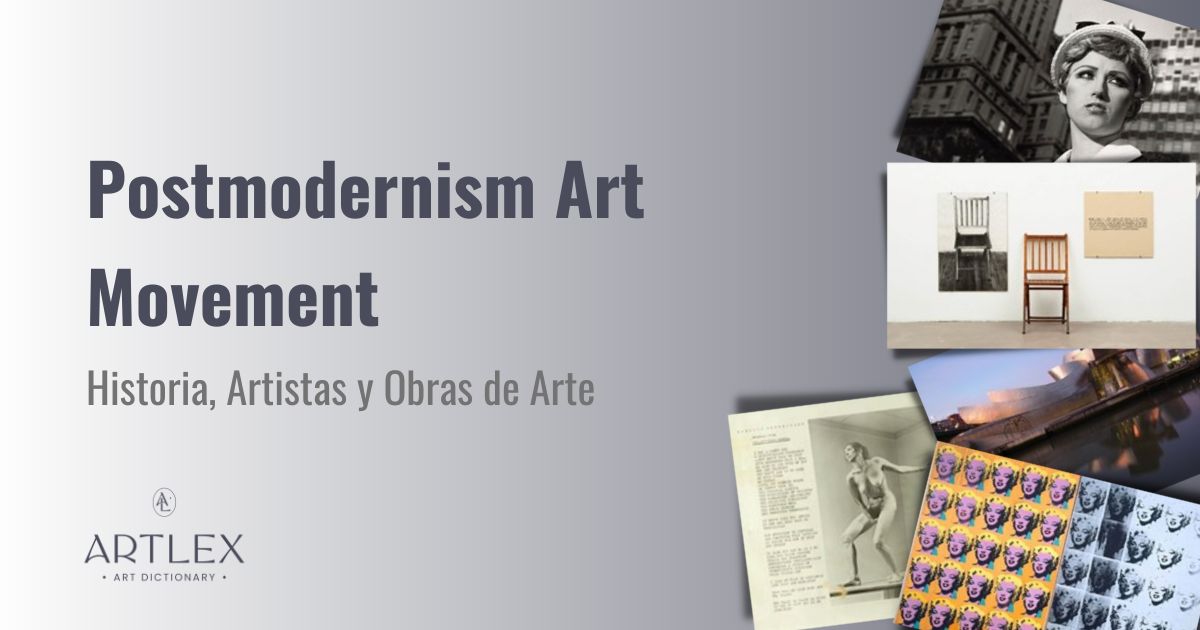What is Postmodernism?
Postmodernism was an artistic movement from the 1960s to the 1990s that rejected Modern art and idealism. Associated with philosophical critique, it defied categorization, yet encompassed many styles such as Pop art, Conceptual art, Neo-expressionism, Feminist art and works by Young British Artists (YBA). Postmodernism used popular culture to inspire artistic creations and each Postmodernist work was an individual reflection of the artist and art history.
Notable Postmodern Works of Art
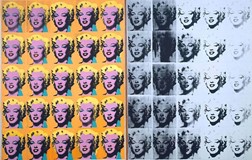
https://www.tate.org.uk/art/artworks/warhol-marilyn-diptych-t03093

https://www.moma.org/collection/works/81435
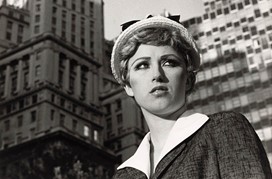
https://www.moma.org/collection/works/56618
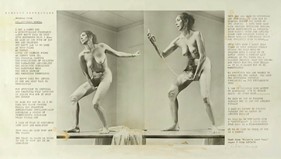
Interior Scroll (1975). Carolee Schneemann via Tate, London
https://www.tate.org.uk/art/artworks/schneemann-interior-scroll-p13282
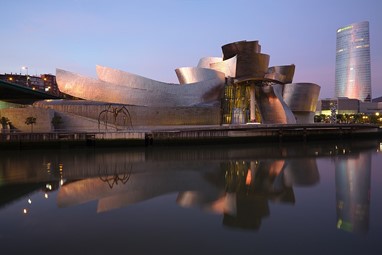
https://www.guggenheim-bilbao.eus/en/the-building
An Introduction to Postmodern Art
By the middle of the 20th century Europe had already experienced World War I and World War II. Artists left for New York, which was now the center of the art world, where abstract principles were applied.
Postmodernism grew from outdated and elitist views on Modernist art. Postmodern culture saw a rise in feminism, civil rights, and rights for the LGBTQ community. Artists and art grew from these changes and influences into a new modern world. Popular culture added an additional layer to Postmodernism.
Some of the most influential artists in Postmodernism include Andy Warhol, Carolee Schneemann, Maria Abramovic, Barbara Kruger, Cindy Sherman, Jeff Koons, and Damien Hirst. Through this cultural movement these artists helped to change art history and the course of the art world.
Characteristics of Postmodernism
Postmodernism challenged universal truths, blurring the line between fine art and popular culture, using mass produced goods, magazines, television, and movies as influence. This allowed for new art incorporating Postmodern philosophy to be created. This cultural movement redefined what was considered art and a Postmodern understanding of the new artist
Postmodernism encompassed what is considered traditional forms of art such as painting, sculpture, and photography, but it also embraced collage, assemblage, montage, bricolage, text, appropriation, and simplification of art. Performance art was at its height, encouraging the audiences to interact with these works of Postmodernism. Ideas, styles, and themes from the past were re-examined and reworked into a new Postmodern style.
Dadaism the Early Pre-Cursor to Post Modern Art
Long before Postmodernism existed, Dadaism (1916-1923) challenged the notion of what was classified as art. Readymade objects, often with slight change were introduced as art. This questioned the notion of art in the modern world and sparked much debate.
French born artist Marcel Duchamp’s caused a scandal with his 1917 work entitled Fountain. His readymade sculpture consisted of a urinal placed on its back.
Duchamp was already beginning to define postmodern art. He could already envision the future of Postmodernism and the changes to the artworld the movement would bring to art history.
Warhol, Pop Art, and Postmodernism
American artist Andy Warhol (1929-1987) initially worked as an illustrator for print magazines, as well as for advertising. This influenced his work in Pop Art that referenced mass produced commercial goods that were part of modern society and everyday life. Campbell’s Soup Cans consists of 32 canvasses each representing a flavor from the ever- popular soup company. The public were shocked that the simplification of everyday objects as the subject of Postmodernism.
Celebrities were also given commercial treatment in his work with their images shown in repetition as common commodities. The most famous example is his 1962 silkscreen Marilyn Diptych containing 50 images of movies star Marilyn Monroe. He accomplished this by projecting a photographic image of Monroe to silk screen, in this example of Postmodernism.
The large artwork measuring six and a half by eight and a half feet was created using acrylic, oil, and silk screen enamel on canvas. The left side is in color like a reel of film, while the right side is black and white like a newspaper image. Here Postmodernism is once again referencing popular culture.
By calling and designing his work as a diptych, or two panels that hinge together just like an altarpiece, he alludes to the fact that movies stars are worshipped like God. Monroe had just died months earlier from suicide, elevating her to icon stature.
Postmodernism and Neo-Expressionism from the Streets
Jean-Michel Basquiat (1960-1988) started as a street artist creating works graffiti and signing them SAMO, in the late 1970s. Curiosity about the artist grew and by the 1980s his Neo-Expressionist works were exhibited in national and international galleries, as examples of Postmodernism. As a young, homeless, gay man of color his work represented the influences of his life, in Postmodern culture. Skulls, medical terms, Black Male cultural figures, and musical themes all appeared frequently in his vibrantly colored Postmodernism works.
In Horn Players (1983) the artist uses acrylic and oil paintstick on three canvas panels in this work in Postmodernism. The works mixes fine art, graffiti art and jazz by featuring saxophonist Charlie Parker and trumpeter Dizzy Gillespie.
A heroic-like figure appears in his work of Postmodernism Untitled (Boxer) (1982). The African American figure is a match-winning boxer, with his gloved hands in the air, and a black halo around his head. The works emphases popular culture in reference to Basquiat’s admiration for real life boxers, like Muhammad Ali and Joe Louis.
Conceptual Art and Postmodernism
Conceptual artist Joseph Kosuth (1945-current) challenged the viewer with his One and Three Chairs (1965). The work in Postmodernism presents a photograph black and white photograph of a wooden chair on the left and a physical wooden chair in the center. On the right a page with text gives the definition of a chair from the dictionary.
Which is the real chair? Which is the reproduction? Philosophical Postmodernism demanded answers from the audience. This was part of the appeal of Postmodern art.
Postmodernism and the Evolution of Sculpture
Jeff Koons (1955) and his porcelain sculptural work in Postmodernism entitled Pink Panther (1988) is one of 20 works in his collection called Banality. Made to look like inexpensive souvenirs or kitch, the German word for mass produced, Koons had the objects from the collection produced at a German workshop.
Pink Panther, standing over three feet tall, shows the garishly painted cartoon character embracing movie star Jayne Mansfield. Merging popular culture with fine art, viewers have questioned if it is art at all, since the artist did not craft it himself. This was a reoccurring theme in Postmodernism works.
Koons also had three exact works made further adding to literary criticism and accusations of commercialism. Controversy arose again when Koons was sued due to copyrighting laws.
Another piece from Banality included Michael Jackson and Bubbles (1988), a life-sized work of the singer with his pet monkey. Painted in gold the artist wanted to highlight Jackson as a god-like icon in a similar fashion to Byzantine art of the past. Koons claimed the triangular composition of this work of Postmodernism came from the High Renaissance and Michelangelo’s Pietà.
Postmodernism and Living Sculpture
Damien Hirst (1965-currently) was part of the Young British Artist or YBA, meant to shock through provocative art and Postmodernism. He explored the issues of science, religion, and death with works such as The Physical Impossibilities of Death In The Mind of Someone Living (1991) is also known as The Shark.
Described as a “living sculpture” a large tiger shark, now dead, rests in a tank of formaldehyde. Viewed as a sculpture-in-the-round the public was given the chance to see the shark up close in ways they hadn’t before. The work provoked thoughts and fears of death, both publicly and violent, within the realms of safety since the shark was dead. By achieving this Hirst was able to explain reality in a very visual way.
The Postmodernism work The Physical Impossibilities of Death In The Mind of Someone Living was commissioned for London businessman Charles Saatchi. The work now remains in the private collection of Steven A. Cohen. The original shark was swapped for a new one due to decay.
Cindy Sherman, Photography and Postmodernism
Artist Cindy Sherman (1954-current) created the History Portraits Series, through her photographic works, while living in Rome between 1988-90. This collection of feminist art, an example of Postmodernism, illustrates women in history through the eyes of the female artist. In each, Sherman inserts herself as the subject in famous paintings by Old Masters.
In Untitled #209 Sherman becomes Mona Lisa from Leonardo da Vinci’s masterpiece of High Renaissance art. Untitled #228 is based on a Botticelli painting, where Sherman portrays Judith, the biblical heroine who slayed Holofernes. In both works she is dressed in period clothing, causing the viewer to take a closer look at how the familiarity of the original art is captured with a modern twist.
The same holds true with her earlier works Untitled Film Stills (1977-1980). Sherman dresses in retro style to create her interpretation of movie heroines. The black and white photographs, which look like stills from old films, are entirely new works of Postmodernism. Yet, the photographs create a sense of familiarity with the viewer, along with a sense of unease.
Postmodernism: Photography, Text, Collage
Artist Barbara Kruger (1945-currently) is best known for her layered black and white photography and collage works combined with bold colored text to draw the viewer in. Her work in Postmodernism is known for social and gender commentary.
Untitled (I shop therefore I am) is a work in black and white showing a human hand. It is holding a red sign with large white text exclaiming “I shop therefore I am.” This is a play on the words I think therefore I am a quote from René Descartes, illustrating the dominance of consumerism and theme of Postmodernism.
Postmodernism and Performance Art
Carolee Schneemann (1939 – 2019) presented her work entitled Interior Scroll (1975) in front of an audience, where she stripped naked and read from her book. Cézanne, She Was A Great Painter (1967). Then, she shocked the audience by pulling a scroll from her vagina and reading the text in this work of Postmodernism.
Serbian artist Marina Abramović (1946-currently) developed her performance art Rhythm 0 to be enacted only once. The results of this Postmodernism work, which was performed at Studio Morra, in Naples, was recorded.
The artist excepted her own risk in the performance. It began with 72 items on a table. The audience was invited to use these objects on her to provoke both pleasure and pain. Representing an object herself, Abramović remained unresponsive to anything she endured for a six-hour period.
Some of the items on the table included: a gun, a bullet, a whip, a pocketknife, perfume, a rose, a feather, various colored paints, wine, honey, cake, grapes, and an apple. The audience became more aggressive as the night progressed. Not only did they become part of the performance but controlled the outcome of this work of Postmodernism.
Postmodernism and Architecture
Postmodernism opposed the clean, straight lines of Modernism and instead were built in curvaceous forms with asymmetrical design. This free-thinking design, in a mix on elements from various architectural styles, is a signature of Postmodernism architecture.
One standout example of Postmodernism architecture is from Canadian architect Frank Gehry (1929- currently) and his design for Guggenheim Museum Bilbao, Spain (1997). Gehry used deconstructivism to create what he called “form following fantasy.” With twisting walls and balconies, the building is constructed of limestone, glass, and titanium, that changes color depending on the light. The building is considered a masterpiece in Postmodernism architecture.
Artists and Architects of Postmodern Style
- Andy Warhol (1929-1987) American (Postmodernism)
- Jean-Michel Basquiat (1960-1988) American (Postmodernism)
- Joseph Kosuth (1945- currently) American (Postmodernism)
- Jeff Koons (1955- currently) American (Postmodernism)
- Damien Hirst (1965-currently) English (Postmodernism)
- Cindy Sherman (1954-current) American (Postmodernism)
- Barbara Kruger (1945-currently) American (Postmodernism)
- Carolee Schneemann (1939 – 2019) American (Postmodernism)
- Marina Abramović (1946-currently) Serbian (Postmodernism)
- Frank Gehry (1929- currently) Canadian (Postmodernism)
Related Art Terms
- Pop Art
- Conceptual art
- Neo-expressionism
- Feminist art
- Young British Artists
- Collage
- Assemblage
- Montage
- Bricolage
- Text
- Appropriation of art
- Simplification of art
- Silk screen
- Silk screen enamel
- Diptych
- Paintstick
- Living sculpture
- Sculpture-in-the-round
- Asymmetrical
- Deconstructivism

